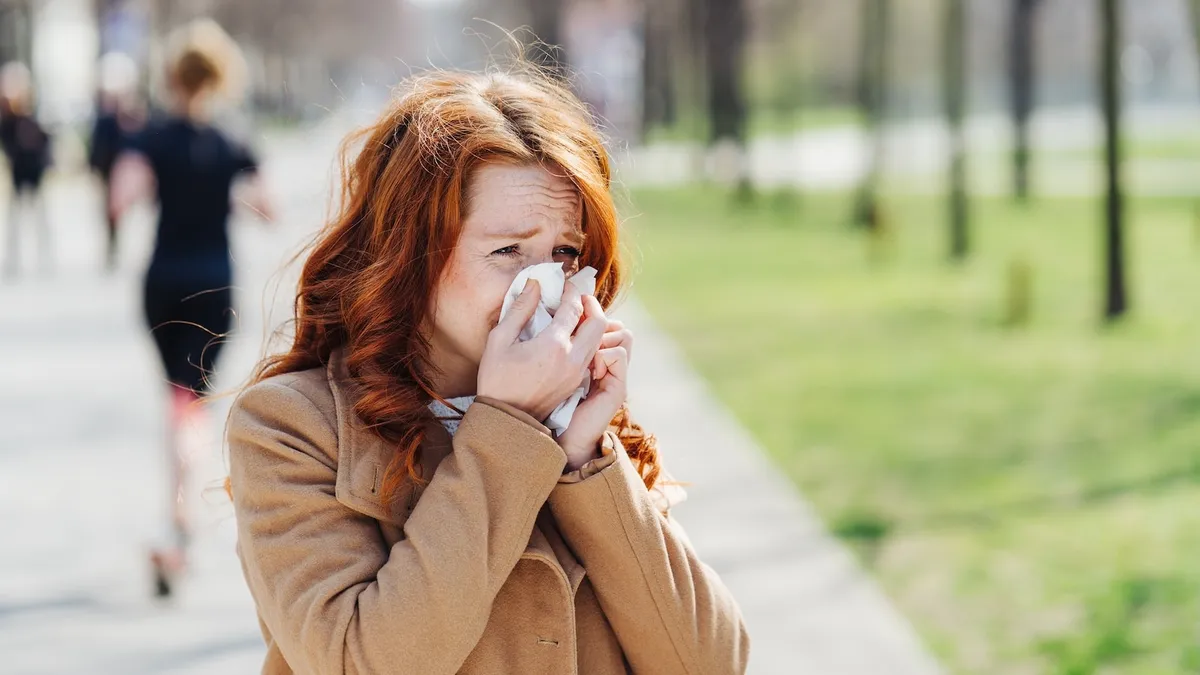
As temperatures begin to warm up, many Americans are bracing for the onset of allergy season. Recent research indicates that this annual phenomenon is becoming increasingly severe, starting earlier, lasting longer, and producing higher pollen levels than ever before. According to a comprehensive report from the Allergy and Asthma Foundation of America, growing seasons have expanded significantly over the past 30 years, allowing plants to thrive for longer periods. Furthermore, data from the USA National Phenology Network reveals that pollen concentrations have surged by up to 21% across North America during this timeframe.
Experts have pointed to a combination of climate change and rising carbon emissions as the primary culprits behind these changes. Dr. William Reisacher, an otolaryngic allergist at Weill Cornell Medicine and New York-Presbyterian Hospital, explains, "We're seeing longer pollinating seasons and higher levels of pollen." This shift in plant behavior is affecting millions who suffer from seasonal allergies.
Seasonal allergies, often referred to as allergic rhinitis or hay fever, occur when the immune system mistakenly identifies pollen from various flowering plants as a harmful substance. Dr. Thanai Pongdee, a consultant allergist-immunologist at Mayo Clinic, describes how the immune system reacts to allergens, leading to the release of histamines and resulting in common symptoms like runny noses, sneezing, and itchy eyes. According to the Centers for Disease Control and Prevention (CDC), these allergic reactions can range from mild to severe, with some individuals experiencing life-threatening symptoms such as anaphylactic shock.
Typically, allergy season begins in the spring, around March, and can extend into the fall, sometimes lasting as late as November. Dr. Reisacher notes that different types of pollen dominate during various seasons; trees pollinate in spring, grasses in summer, and weeds in fall, with ragweed being particularly prevalent in the fall months. Alarmingly, research has shown that allergy seasons are not only extending but also intensifying, lasting an average of 13 days longer than they did two decades ago.
A study conducted by the University of Michigan in 2022 projected that by the end of the century, pollen emissions could start 40 days earlier in the spring compared to the period between 1995 and 2014. This could mean an additional 19 days of high pollen counts, significantly impacting those with allergies. The role of climate change is critical here; a 2021 study highlighted that human-induced climate change is exacerbating the pollen season, lengthening it by an average of 20 days between 1990 and 2018.
Dr. Reisacher explains that as global temperatures rise, more storms are generated, which can disperse pollen over greater distances. This not only makes pollen more allergenic but also allows it to penetrate deeper into the lungs. Additionally, warmer temperatures result in a delayed first frost in the fall, prolonging the time that pollen remains airborne. The increased presence of greenhouse gases in the atmosphere, primarily from fossil fuel consumption, further contributes to this issue. More carbon dioxide in the air fuels plant growth, leading to increased pollen production.
Given these factors, allergists like Dr. Reisacher and Dr. Parikh predict that a rising number of individuals will experience seasonal allergies in the coming years. As a result, awareness and proactive management of seasonal allergies are becoming increasingly important.
For those struggling with seasonal allergies, various over-the-counter medications are available, including antihistamines, nasal sprays, and rinses. Dr. Parikh recommends starting with 24-hour antihistamines for long-lasting relief with fewer side effects. In addition to antihistamines, nasal steroid sprays and eye drops can help alleviate symptoms. If symptoms persist, consulting an allergist is advisable.
For long-term relief, allergy shots may be an option for individuals seeking an alternative to daily medications. Dr. Reisacher emphasizes the importance of beginning treatment a few weeks before allergy season starts to allow medications time to take effect. He also suggests practical steps for minimizing pollen exposure at home, such as keeping windows closed during peak pollen hours, using air conditioner filters, and showering to remove pollen from skin and hair.
Creating a pollen-free environment, particularly in the bedroom, can provide a sanctuary for those affected. Ensuring a safe haven helps reduce exposure and allows the immune system to rest, which is vital for managing seasonal allergies effectively.